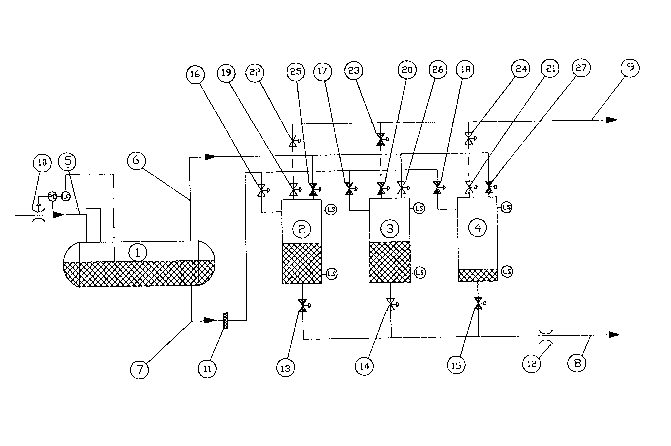Some of the information on this Web page has been provided by external sources. The Government of Canada is not responsible for the accuracy, reliability or currency of the information supplied by external sources. Users wishing to rely upon this information should consult directly with the source of the information. Content provided by external sources is not subject to official languages, privacy and accessibility requirements.
Any discrepancies in the text and image of the Claims and Abstract are due to differing posting times. Text of the Claims and Abstract are posted:
| (12) Patent: | (11) CA 1314303 |
|---|---|
| (21) Application Number: | 1314303 |
| (54) English Title: | METHOD FOR SEPARATING GAS AND LIQUID |
| (54) French Title: | METHODE DE SEPARATION GAZ-LIQUIDE |
| Status: | Expired and beyond the Period of Reversal |
| (51) International Patent Classification (IPC): |
|
|---|---|
| (72) Inventors : |
|
| (73) Owners : |
|
| (71) Applicants : |
|
| (74) Agent: | G. RONALD BELL & ASSOCIATES |
| (74) Associate agent: | |
| (45) Issued: | 1993-03-09 |
| (22) Filed Date: | 1989-09-28 |
| Availability of licence: | N/A |
| Dedicated to the Public: | N/A |
| (25) Language of filing: | English |
| Patent Cooperation Treaty (PCT): | No |
|---|
| (30) Application Priority Data: | |||||||||
|---|---|---|---|---|---|---|---|---|---|
|
- 6 -
ABSTRACT: A method for the transportation and separation of
gas from liquid and solid media in one or several
stages in a manner so that the pressure in the
gaseous phase from an early separator stage or
from another gas deposit is utilized for the
transportation of the fluids produced in sub-
sequent separator stages. Gas which is separated
off at high pressure in an early separator stage
or gas from another gas deposit is led into a se-
parator which has carried out separation at a
lower pressure. The high pressure gas forces out
the ready separated fluid which is present in the
separator receiving the high pressure gas. The
separator stage which receives high pressure gas
from a preceding stage or another gas source, is
made up of several identical separators which al-
ternate in carrying out the functional phases
stated below in the sequence indicated so that
there is at all times one separator carrying out
functions within one phase.
Phase 1 Gas is separated from liquid at a pres-
sure necessary to maintain export of gas
from the process.
Phase 2 Liquid is exported out of the separator
by means of gas from a preceding separa-
tor stage or from another gas deposit.
Phase 3 The separator is decompressed by gas be-
ing let out of the separator to a gas
export line.
Note: Claims are shown in the official language in which they were submitted.
Note: Descriptions are shown in the official language in which they were submitted.

2024-08-01:As part of the Next Generation Patents (NGP) transition, the Canadian Patents Database (CPD) now contains a more detailed Event History, which replicates the Event Log of our new back-office solution.
Please note that "Inactive:" events refers to events no longer in use in our new back-office solution.
For a clearer understanding of the status of the application/patent presented on this page, the site Disclaimer , as well as the definitions for Patent , Event History , Maintenance Fee and Payment History should be consulted.
| Description | Date |
|---|---|
| Inactive: IPC from MCD | 2006-03-11 |
| Inactive: IPC from MCD | 2006-03-11 |
| Time Limit for Reversal Expired | 2003-03-10 |
| Letter Sent | 2002-03-11 |
| Grant by Issuance | 1993-03-09 |
There is no abandonment history.
| Fee Type | Anniversary Year | Due Date | Paid Date |
|---|---|---|---|
| MF (category 1, 5th anniv.) - standard | 1998-03-09 | 1998-02-23 | |
| MF (category 1, 6th anniv.) - standard | 1999-03-09 | 1999-02-24 | |
| MF (category 1, 7th anniv.) - standard | 2000-03-09 | 2000-02-24 | |
| MF (category 1, 8th anniv.) - standard | 2001-03-09 | 2001-02-27 |
Note: Records showing the ownership history in alphabetical order.
| Current Owners on Record |
|---|
| AKER ENGINEERING A.S |
| Past Owners on Record |
|---|
| KRISTIAN BREKKE |